It’s 3.30am on a dismal and sea fog-swirling morning, as I plunge into the gloom of a Cornish fret. As I head towards the A30 and Bodmin, familiar and mystical names wreathed in local folklore loom up out of the murk. Altarnun, Dozmary Pool and St Neot all pass by, their tales now steeped in legends of the Land of Merlin. As I press on, leaving the Du Maurier country behind me, I head for Penzance and more specifically it’s more commercially important neighbour Newlyn, where I’m due to meet a man I feel I know quite well already, thanks to the power of the increasingly important Twitter platform.
I pull into the harbour car park at Newlyn about an hour later. Although still dark, the fluorescence of the security floodlights round the port, brightens the scene considerably and the ever-winging herring gulls and black-backs, pierce the early morning calm with their chattering and kewing.
I simply abhor being late, for anything, and on a morning such as this, the thought of delaying the start of what I know to be a defining one for me, fills me with dread and so it’s with considerable relief that fifteen minutes before my prescribed meeting time, I’m standing by the ramp to the pontoon with a hardly containable excitement building.
A figure appears from down on the walkway to the Under 10 metre dayboats and calling my name in the now diluting darkness, approaches and shakes me warmly by the hand. My morning accompanying Kevin Penney (@kevin_penney) pioneer fisherman and founder of Dreckly Fish, has just begun. Here is a man, I’m to discover, who is not only living his own dream, but also one of mine.
We exchange initial pleasantries and I’m presented with the essential bib and brace oilskins that form the universal protective attire associated with modern commercial fishermen. Donning these we both remark on the weather and pick our way to the moorings where Kevin’s boat FH 32 – “Bess” (a Cygnus workboat) is lying, loaded with fuel and bait and awaiting.
Kevin casts off and slowly we chug out into the main harbour, proceeding at low knots “Through the Gaps” and after allowing two larger scallopers to overtake us, we steam steadily into Mounts Bay and initially West, past the iconic, lamentable and stirring sight of the old Penlee Lifeboat house, home to the immortal memory of the Solomon Browne and her heroic crew.
The sea is slight, although the wind speed of the preceding few days has conjured up a bit of swell which will take a day or two to flatten. Kevin informs me that our trip this morning will consist of three elements. Lining for Mackerel (Scomber scombrus), some “Boarding” for Pollack (Pollachius pollachius) and the hauling of some strings of pots for Lobster (Homarus gammarus), that lie fishing to the East of St Michael’s Mount, across the bay.
Dreckly Fish is a consortium, a collaboration of four like-minded individual fishermen, who have been forged together in a commercial union, with the sole purpose of adding due value to their products. Deluded and confounded by prices met at auction and with little recourse for action, these experienced and progressively thinking fishermen have fought their corner and now find themselves riding the crest of a wave of quality, responsibility and sustainability, that grows stronger by the day.
Kevin Penney has cleverly engineered this project from the start. Having made a departure from the fast-paced world of IT five years ago, sailed round the world and dived extensively in her seas, Kevin’s realisation that his heart and mind lay in fishing, took root finally in Cornwall and with huge enterprise and self-belief he settled his family nearby, took advice, crafted a plan and was soon confidently fishing out of Newlyn, for crab, lobster and all seasonal species of fish that are able to be caught using the static and low impact types of gear associated with the Under 10 metre fleet.
Underpinning this confidence also, lay a detailed knowledge of the waters and ground that now hosted the pots and nets that Kevin had started to employ.The years of diving and exploration in seas at home and abroad had given him not only first hand knowledge of the fish and shellfish he targets, but an invaluable insight into the modus operandi of the gear’s function, enabling him to make alterations and fine adjustments in order to fish to optimum capacity.
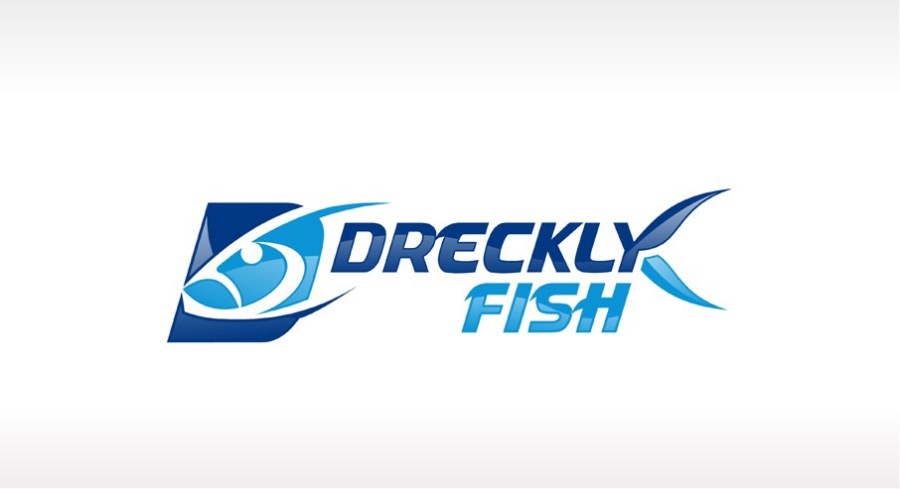
Kevin elaborates: “Diving these waters extensively has given me a fascinating insight into the flora and fauna that inhabit our local seas. It has enabled me to see the species that we target, living and feeding in their natural habitat. I have observed not only how the fish are caught but how they shoal and where they congregate. A few years ago, following a dive, I reported that I’d seen Crawfish just West of here, quite close inshore and a year later, they were turning up in static gear and being reported by numerous day boat fishermen.”
We continue to chat as Mousehole Harbour looms out of the still swirling mist off the starboard beam. We throttle back and prepare for the first catching-stage of our trip, – hand-lining for mackerel, although the erstwhile Mr Penney is not exactly brimming with confidence and I can soon see why.
Unravelling the lines, we deploy the trace of hooks astern, that rapidly sink out of sight, the weighty lead pulling the spooling monofilament over the transom of the boat, Each hook-shank is sheathed in a sleeve of bright red plastic, less wearing and just as effective, I’m assured, as the more traditional Cornish feathers.
We motor on and although the fish finder clicks and bleeps as pelagic shoals come and go, nothing appears to take. Further on still and upon hauling the line back in, just one diminutive Scad or (horse mackerel) graces the deck. I’m slightly bemused, as my experiences hitherto of mackerel fishing have often involved considerable numbers of quivering silver-blue darts flapping round my feet in very little time applied. My quizzical look must register with my skipper as he decides that mackerel would appear to be off the menu. As we make the decision to haul again, something catches my eye off the port bow and now I know the reason for the dramatic dearth of fish, as a lively pod of Harbour Porpoises approach at speed and plunge ‘neath our keel in a defiant gesture of ownership of the water.
No chance of mackerel here today then.
Lines back aboard and stowed, my enthusiasm instantly returns as we head for a rocky reef south of St Michael’s Mount. The day is brightening now and the although still meagre sun is staring to burn away the fret opening up the expanse of the bay and the headlands to the East. Next up is pollack-boarding, a technique I confess I have so far attained, zero knowledge of.
Kevin explains with an excited tone that this is one of his favourite fishing methods, Hugely selective and often dramatic in its effect, the use of the “board” (a type of diving-vane), allows the lures (rubber sandeels) to work at variable depth from just off the sea-bed to mid-water, depending on where the fish appear on the sonar. The skill of the skipper then comes into play, in firstly locating the fish and thence managing the lures in a targeted fashion, amidst the pollack, using the tide, the speed of the boat and its maneuverability, to place them virtually on the very nose of the fish for maximum effect.
With Greater Sandeels being the primary food source for the pollack, the fish-finder buzzes into life as we approach the contours of the reef and Kevin points out the dense shoaling bait-fish rising up off the sand and over the rocky escarpment. Soon larger blips and icons appear, which flag up the quarry and indicate large individual specimens, detail unimaginable to the fishermen of yesteryear.
The gear is duly shot and we steam steadily across the tide working back and forth trying to ascertain the correct angle of approach. Minutes pass and suddenly a tell-tale smile across the skipper’s face indicates a hit. The board pops up astern and Kevin hauls in quickly, lest the line goes slack. The board comes over the gunwales and moments later a gorgeous green and gold pollack swings aboard, its eyes bulging and its near-luminescent, olive back sparkling a with a magnificent hue. A wonderful sight indeed, to observe such a beautiful fish in its prime and up close in all its radiantly golden detail. The gear is shot away again and we try to emulate the same track, where the fish took. No avail. Try as we might, replication of the event doesn’t occur. Tide is judged to be the limiting factor and we stow the gear as Kevin suggests we move across the bay further east’ards to haul a few strings of lobster pots before returning again to entice the Pollack, nearer to slack water.
A few more minutes steaming brings us in sight of the bobbing yellow dahn of the first string as marked on the plotter. My pulse races slightly as the realisation that its been some thirty-plus years since I last hauled a lobster pot, hits me in a wistful moment, as I recall the trips of my youth, hauling by hand in Bullseye thigh waders and an oilskin apron, off the Suffolk coast aboard Swallow II. Today it’s all so different, as the dahn is swung over the side and I’m shown to my position aft, as the rope is engaged in the hydraulic hauler.
The first pot arrives pouring and weed-fronded. A large “parlour” pot – an anchor for the rest of the string, lest weather prevents hauling for days at a time and the likelihood of the traps being moved by the sea. I notice the radiant and familiar, flapping, blue-black of our desired quarry and my adrenalin pumps. This fish, a definite keeper, but I can’t help but also notice its companion, not so much flapping, as writhing and contorting into grotesque and serpentine shapes. The pot door is opened and the unmistakable head of an extremely annoyed Conger Eel, (Conger conger) makes an opportunist dash for freedom, followed by all three feet of its uncoiling, muscular torso. I inquire as to if it should have been landed, but with prices being so low for its meat, return to whence it came saves a lot of hassle.
Kevin swiftly hauls the remainder of the string and we end up with three decent fish in the basket and a sizeable Brown Crab (Cancer pagurus) The noted cock crabs are a little thin on the ground right now and the hens that we catch in the ensuing creels are small and watery having recently changed their shells. The lobsters keep coming though and after another string has been hauled and re-baited and shot away, we have several to show for our efforts. Each fish is measured against a gauge to ensure compliance with the minimum landing size. Even a minor indiscretion with measurements being “just on the feathers” is a reportable and fineable offence and every precaution is taken to safeguard the catch, as the boarding of vessels and measuring of fish by MMO officials is a common occurrence.
Even more encouraging than that though, are the number of barely sizeable fish that we return. A concerted breeding programme, initiated by the National Lobster Hatchery in Padstow, has involved lobstermen around the Cornish coast sending “berried” or egg-laden hens to have their progeny stripped and nurtured in nursery tanks, until old enough to be released back into their natural environment. This pioneering work has ensured that not only are fishermen now actually returning more lobsters than they land, but the genetic provenance of the population can be traced and monitored.
After a fascinating hour, which sees the Dreckly pots yield Wrasse (Ballan & Rainbow), Rockling, Spiny Starfish and Spider Crabs, we bait the last pots with salted Herring (the preferred temptation) and I’m set to work banding the claws of the catch, lest a fight breaks out and valuable limbs are lost. A soaked hessian sack is laid across the fish to keep them cool and in optimum health for the remainder of the trip and with final string shot away and marked, we return expectantly to the pollack ground.
The sea has increased slightly now and when beam on to the swell, we roll a little. The board procedure is repeated and we work to and fro across the reef until again we strike lucky and moments later another prime specimen of Pollachius pollachius is on the deck. I’ve been watching intently throughout the whole morning, trying to observe every intricacy and nuance of the methods involved. The speed of the boat, the angle across the tide, the position on the plotter and the trace of the fish finder. I suddenly find myself brimming with pride and self-satisfaction, as my skipper nonchalantly announces, that it’s now my turn to fish and hands me the line, directs me to the tiller and instructs me to carry on the process.
Now I’m in control, (or so I think) as I pick my way along the reef, scanning the monitor for signs that fish might lurk below.
“Put a 90 degree turn in ” advises Kevin , and as I respond to his request the line goes slack, the board rising through the water column, trailing the rubber eels up and among the tide-nosing pollack. I straighten up, the board dives, the line comes taut again and BANG- I’m in! Not a huge fish mind, no denizen to be sure, we can sense that by the absence of the board rocketing to the surface, but a fish nonetheless and to my delight (and slight astonishment), my first ever hand-line caught pollack glides over the gunwales, seconds later.
Kevin is there on hand with smart phone to capture the moment. A beaming grin and congratulatory shake of the hand are all that’s needed, to approve the fact that I have caught, but in an instant, with the fish unhooked and consigned to the ice box, it’s back to business. I re-shoot the gear taking care to ensure the board is launched correctly and I’m fishing again.
Over the next half-hour I bring another four prime pollack to the boat. The skipper busies himself making calls to customers and placing photos of the catch on the various media platforms that are so essential to the Dreckly Fish marketing strategy. More often than not, a morning’s cumulative catch, from all four boats, can be sold even before the vessels re-enter the harbour, thanks to the power of Twitter and the common desire from the team to engage with their customers.
That’s what defines the model, that’s the Dreckly ethos.
Fishing over, we return to base, the accompanying gulls feasting on the offal of the gutted fish that now lie slush-iced in the box, ensuring their core temperature remains about 2C prior to landing and dispatching.
As we tie up on the pontoon, some schoolchildren on an outing wave to us and take our pictures. Immensely satisfied with our morning, I feel justly proud to have been witness to the Dreckly way of fishing, but I recognise I have been lucky. A combination of calm sea and fair weather have meant I have seen the more pleasurable side of the business. Not so always the case, when the elements combine, with a lack of fish, to produce a miserable, tiring and body-aching experience with mortal danger lurking behind each cresting swell.
Ashore now and time to process the catch. First though, to meet the rest of this notable and creditable team and first up I’m introduced to Francis (@francispz61) having also just tied up, a veritable stalwart of the Cornish fishing industry and fount of experience and knowledge.Then Andrew on FV Benediction, (@cornishlobster, another Cygnus) comes ashore and shows us with considerable pride his largest lobster caught to date this year, an impressive fish of about 7lbs which currently resides in his keep-pot. Finally I meet Louis, the newest member of the Dreckly crew (@LouisFH706), owner-skipper of a 19 foot Buccaneer, who brings a wealth of fishing aptitude to the party and compliments the team perfectly in terms of catch variety.
All the guys are keen to show me exactly what “Dreckly Quality” entails and as the fish are weighed, tagged and packed Francis and Andrew inform me how teamwork is essential to the viability of this unique and growing business. Their recently renovated cold store and packhouse on the side of Newlyn fish quay is testament to their determination to self-administer, in every aspect of their business.
“Each member fishes in his own right” expands Francis, ” but we all muck in with the processing and dispatching of the catch. We’re in constant contact with each other and know what orders are awaiting. Kevin runs a schedule, which we are all party to. When a new order is placed, he updates the schedule and we all receive instant notification.” A case I can see, of IT being used to maximum effect, keeping the team ahead of the game and able to respond efficiently to real-time scenarios.
As Kevin tags the still-gleaming pollack, Francis turns his attention to shrink-sealing a poly-box ready for dispatch. The live lobsters inside having been ensconced with frozen gel packs and seaweed for the perfect travelling environment.
Andrew chips in: “by paying so much attention to detail, we know our products have the maximum chance of arriving at their destination in peak condition. We once had a box of live lobsters go missing with the courier and when they were returned to us two days later, they were all still alive and kicking!”
I wholeheartedly agree and having now witnessed the Dreckly process from start to finish and having enjoyed their produce for so long, the circle of traceability for me is now complete and I see the entire picture.
The team disperses to carry on their daily chores and I bid Kevin farewell, having received unexpected and hugely appreciated payment for my morning’s labours, in the form of two of my beautiful hand-lined pollack. I depart the harbour and head back to our holiday abode a gratified man with a vow to return and go afloat again one day, with this team of inspirational fishermen.
Once again, I’ve discovered that meeting and engaging with those who operate at the coal face of the industry has not only better educated and informed me, but given me a valuable insight into the operational techniques employed to bring top quality seafood to our table.
#DrecklyQuality.
Mike Warner 2015
For more information and to place orders with Dreckly Fish, visit:
http://www.facebook.com/dreckly.fish
@drecklyfish


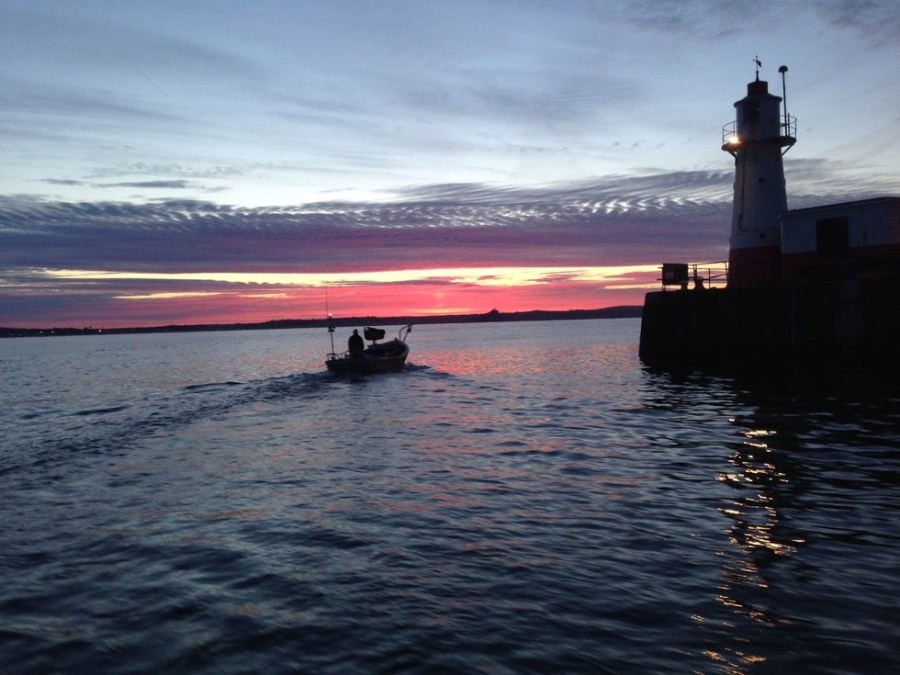

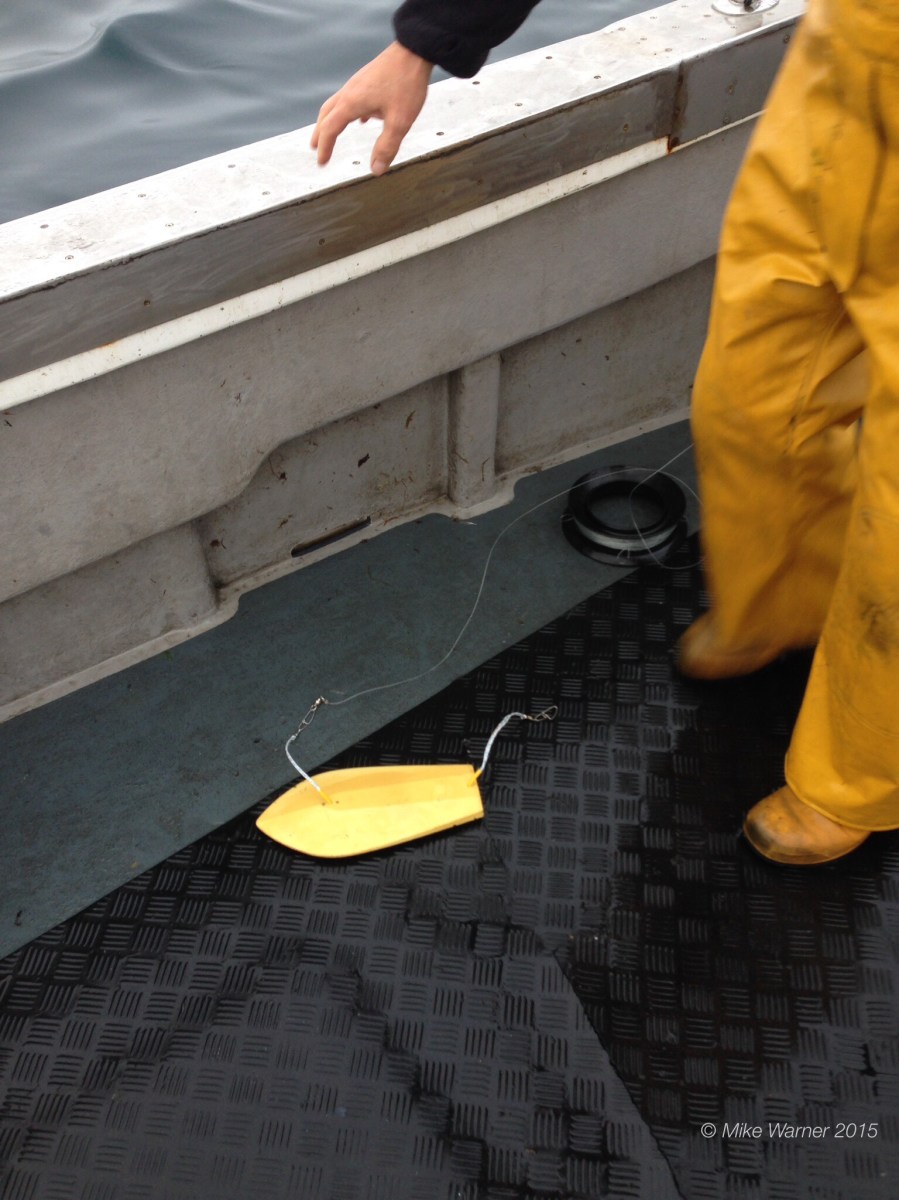








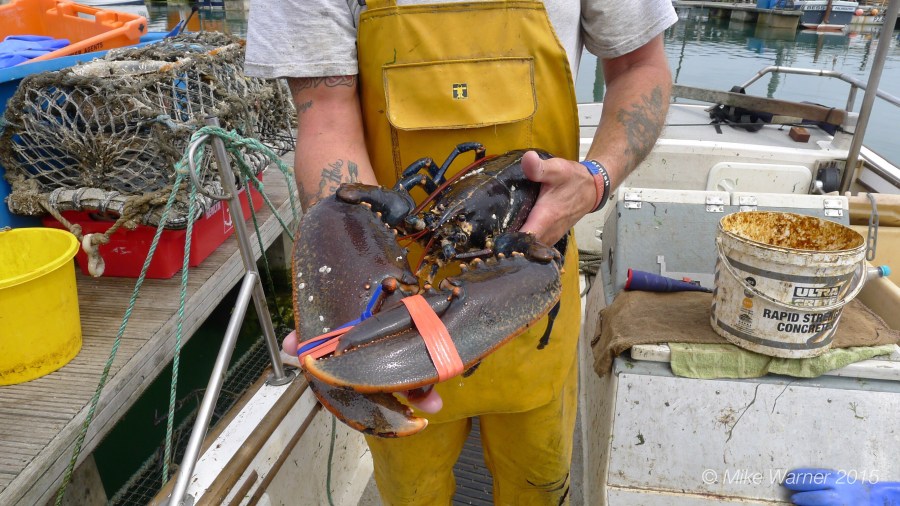



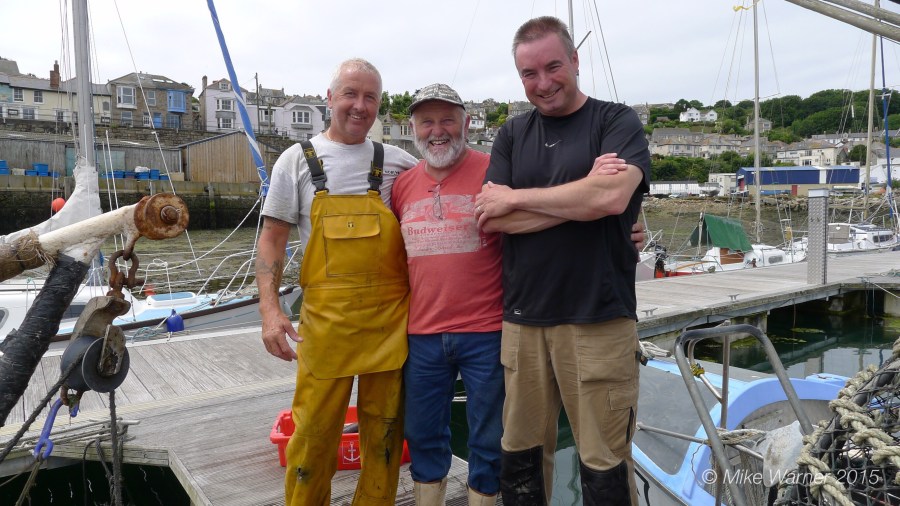
Wonderful tale. I believe what these fishermen are doing is the future of the inshore fleet. I am a small boat fishermen working from Clovelly on the North Devon coast and follow avidly the goings on of the Dreckly fishermen.
LikeLiked by 1 person
Thank you. Clovelly ? That’s a lovely place. I ought to come and write about the Herring?
LikeLike
You’d be very welcome.
LikeLiked by 1 person
[…] desire to repeat in 2016. For those who wish to relive the account, all is revealed in “A Dreckly Morning” which also appeared in a shortened version, in the recent November edition of “The […]
LikeLike
[…] the same way that was demonstrated to me last year in Cornwall, during my morning spent with the Dreckly fishermen at […]
LikeLike
[…] So on arrival from Suffolk last week and with an eagerness that can only really described as verging on obsessive, I found myself at the harbour again, one year ago to the very week, since my last excursion into Mounts Bay with Dreckly Fish […]
LikeLike